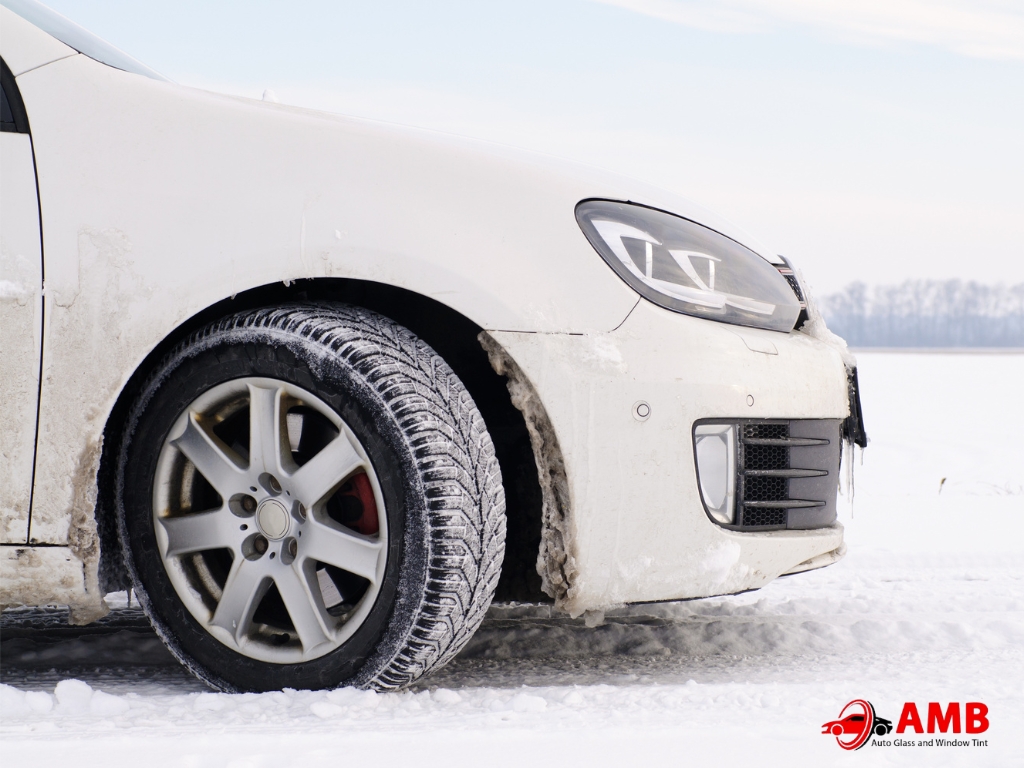As the temperatures drop and the winter season sets in, it is crucial to ensure that your car is properly taken care of to withstand the harsh weather conditions. One common question among car owners is whether to warm up the engine of their cold car before hitting the road.
This article will explore the importance of warming your car engine in cold weather and provide valuable insights into this winter car care practice.
How Long Should I Leave My Car Running Before Driving?
The age-old tradition of warming your diesel engines before driving in cold weather has been debated for years. Many of us remember our parents or grandparents diligently starting their cars and letting them idle for several minutes before driving off on a frosty morning. But is this practice still necessary in today’s world of advanced automotive technology?
The answer is not as straightforward as it may seem. Modern cars are equipped with sophisticated systems that have made the need for extended warm-up times largely obsolete. However, some warming up of the engine is still advisable, especially in extremely cold conditions.
Oil pump systems in modern vehicles ensure efficient oil circulation even in cold weather, reducing the need for prolonged idling.
According to AAA (American Automobile Association), leaving your car unattended or idle for an extended period is unnecessary before driving, even in cold weather. In their article, they suggest that idling for more than 30 seconds is generally unnecessary and wasteful. The best practice is to start your car, allow the engine to idle for about 30 seconds to a minute, and then drive off gently.
Winter Car Care: 3 Tips for Warming Up Your Engine Safely
While the 30-second to one-minute idling rule is a good general guideline, there are situations where a bit more warm-up time may be beneficial. Here are three tips for warming up your engine safely in cold weather:
1. Avoid Excessive Idling
As mentioned earlier, excessive idling can harm your engine and the environment. Not only does it waste fuel, but it can also lead to incomplete combustion, increased carbon buildup in the engine, and higher emissions.
Instead of leaving your car running for an extended period of time, here’s how you can warm up your engine more efficiently:
Example Scenario: Imagine it’s a crisp winter morning, and you’ve just started your car. Instead of sitting in your driveway for several minutes with the engine idling, consider this approach:
-
Start your car and allow it to idle for about 30 seconds to a minute to let the oil circulate and the engine components begin to warm up.
-
During this brief warm-up period, use the time to clear snow and ice from your windows, ensuring clear visibility.
-
Once you’ve completed these tasks, begin driving gently. This helps your car warm up while reducing unnecessary fuel consumption.
2. Drive Gently at the Beginning
The first few minutes of driving in cold weather are critical for your engine’s well-being. Cold engines are less efficient and more susceptible to wear and tear. To protect your engine and optimize its performance, follow these guidelines:
Example Scenario: Picture yourself on a frosty morning, ready to leave for work. You’ve followed the initial warm-up period mentioned earlier. Now, as you hit the road, here’s how to drive gently:
-
Be gentle on the accelerator pedal. Avoid rapid acceleration and apply gradual pressure to build speed steadily.
-
Use smooth and gradual braking techniques to slow down or stop. This prevents unnecessary strain on the cold brake components.
-
Keep your speed in check, especially during the first few minutes of driving. Avoid high speeds or sudden bursts of acceleration until the engine has warmed up sufficiently.
3. Park in a Garage or Use a Block Heater
If you’re looking to provide your engine with extra protection from extreme cold temperatures, consider these options:
Example Scenario: You live in an area where the winters can be harsh, and your car is exposed to the elements overnight. Here’s how you can take extra steps to care for your engine:
-
Park in a Garage: If you have access to a garage, use it during the winter months. A garage provides a sheltered environment that shields your car from the bitter cold. As a result, your engine stays warmer, and the vehicle is easier to start in the morning.
-
Use a Block Heater: In cases where a garage is unavailable, a block heater can be a valuable tool. A block heater is an electrical device that attaches to your engine and keeps it warm overnight. It’s particularly helpful in extreme cold conditions.
-
Keeping the engine warmer ensures a smoother start in the morning, reduces wear and tear on the engine, and even improves fuel efficiency.
Benefits of Warming Up Your Car Before Driving in Winter
Now that we’ve discussed the proper warm-up procedure, let’s explore why it’s essential to warm up your car engine in cold weather:
1. Improved Lubrication
Cold oil is thicker and less effective at lubricating the engine’s moving parts. Warming up the engine allows the oil to reach its optimal viscosity, ensuring better lubrication and reducing engine wear.
2. Enhanced Interior Comfort
Warming up your car for a few minutes can make your morning commute more comfortable. It allows the heater to start producing warm air sooner, keeping you cozy while you drive.
3. Minimized Fuel Consumption
Fuel injection has improved cars by optimizing the air-fuel mixture, which helps save on fuel. Surprisingly, letting your car idle for a short time (around 30 seconds to a minute) is more efficient than driving off with a cold engine, which can lead to better fuel efficiency over time. Advanced systems like efficient oil pan in modern vehicles also play a role in saving fuel.
4. Increased Safety
A warm engine is more responsive and performs better overall. This can be especially important in emergency situations or when you need to accelerate quickly to avoid hazards on slippery winter roads.
5. Reduced Emissions
While it’s important to warm up your engine, it’s also crucial to avoid excessive idling. Unnecessary idling contributes to air pollution. By following the recommended warm-up times, you can reduce your carbon footprint.
City Regulations
City regulations related to engine idling can be quite diverse, reflecting individual municipalities’ specific environmental concerns and air quality priorities. These regulations are designed not only to mitigate air pollution but also to promote a healthier and cleaner urban environment. Motorists need to be aware of and comply with these regulations to avoid fines and support environmental conservation efforts.
For instance, in densely populated cities like New York City, stringent rules have been implemented to combat excessive engine idling and promote car plugged. Reducing unnecessary emissions is crucial in this bustling metropolis, where millions of vehicles traverse the streets daily.
New York City prohibits engine idling for more than three minutes, and this limit is further reduced to just one minute in school zones. This demonstrates the city’s commitment to ensuring that children are not exposed to excessive pollution at school.
Imagine waiting to pick up your child from school in New York City on a chilly winter day. It’s tempting to keep your car running to stay warm, but doing so for more than a minute in a school zone could result in a fine or a warning for not wearing a seat belt. By being aware of and adhering to these regulations, you not only avoid penalties but also play your part in creating a cleaner and healthier urban environment.
However, it’s important to note that city regulations regarding engine idling can vary widely, not only from one city to another but also within different parts of the same city. Therefore, as responsible drivers, you must stay informed about the specific rules and limits that apply to your location.
You can typically find this information on your city’s official website or by contacting local authorities. By following these regulations, you not only contribute to cleaner air but also set a positive example for others in your community, encouraging a more environmentally conscious approach to urban living.
FAQs
Is it necessary to warm up my car engine every day in winter?
It’s not necessary to warm up your car engine every day. Modern cars are designed to handle cold weather conditions. Following the recommended warm-up procedure when it’s extremely cold is sufficient.
Is it advisable to warm up my car by revving the internal combustion engine?
No, excessively revving the internal combustion engines is not recommended for warming your car. This practice can place unnecessary stress on the engine and might not efficiently warm it up.
Does warming up my car waste fuel?
Warming up your car for a short period (around 30 seconds to a minute) consumes very little fuel and is more fuel-efficient than driving with a cold engine.
How can I improve my car’s winter performance?
Besides a warm car¸ consider using winter tires, keeping an emergency kit in your vehicle, and ensuring your car’s fluids are at the correct levels.
In conclusion, warming up your car’s engine in cold weather is an essential aspect of winter car care. By adhering to the recommended warm-up period of approximately 30 seconds and adopting a gentle driving approach during the initial moments of your journey, you can contribute to proper engine lubrication, better fuel efficiency, and improved battery performance. Moreover, it’s crucial to be aware of your local city regulations concerning idling to avoid potential fines or penalties.
As you prioritize your vehicle’s well-being during the winter months, remember that expert assistance is always available to address any winter-related automotive concerns. For residents in the San Diego area, look no further than AMB Auto Glass and Window Tint. Our team of skilled professionals not only specializes in auto glass and window tint services but also provides valuable advice on winter car care. With our commitment to customer satisfaction and safety, you can trust AMB Auto Glass and Window Tint to help you navigate the cold weather with a clear view and a well-maintained vehicle. Stay warm and safe on the road this winter by practicing these essential car care tips and relying on AMB Auto Glass and Window Tint for all your automotive needs.

